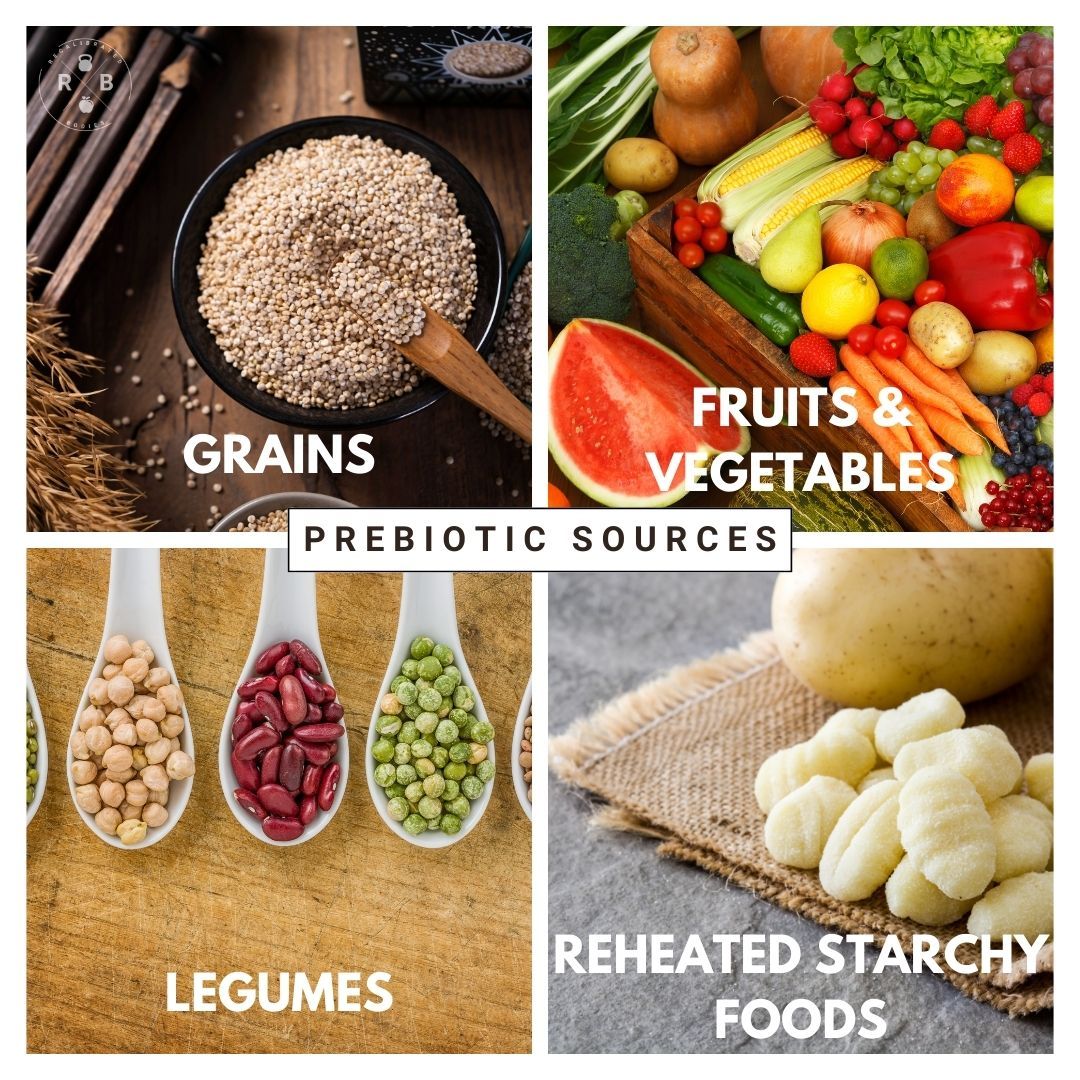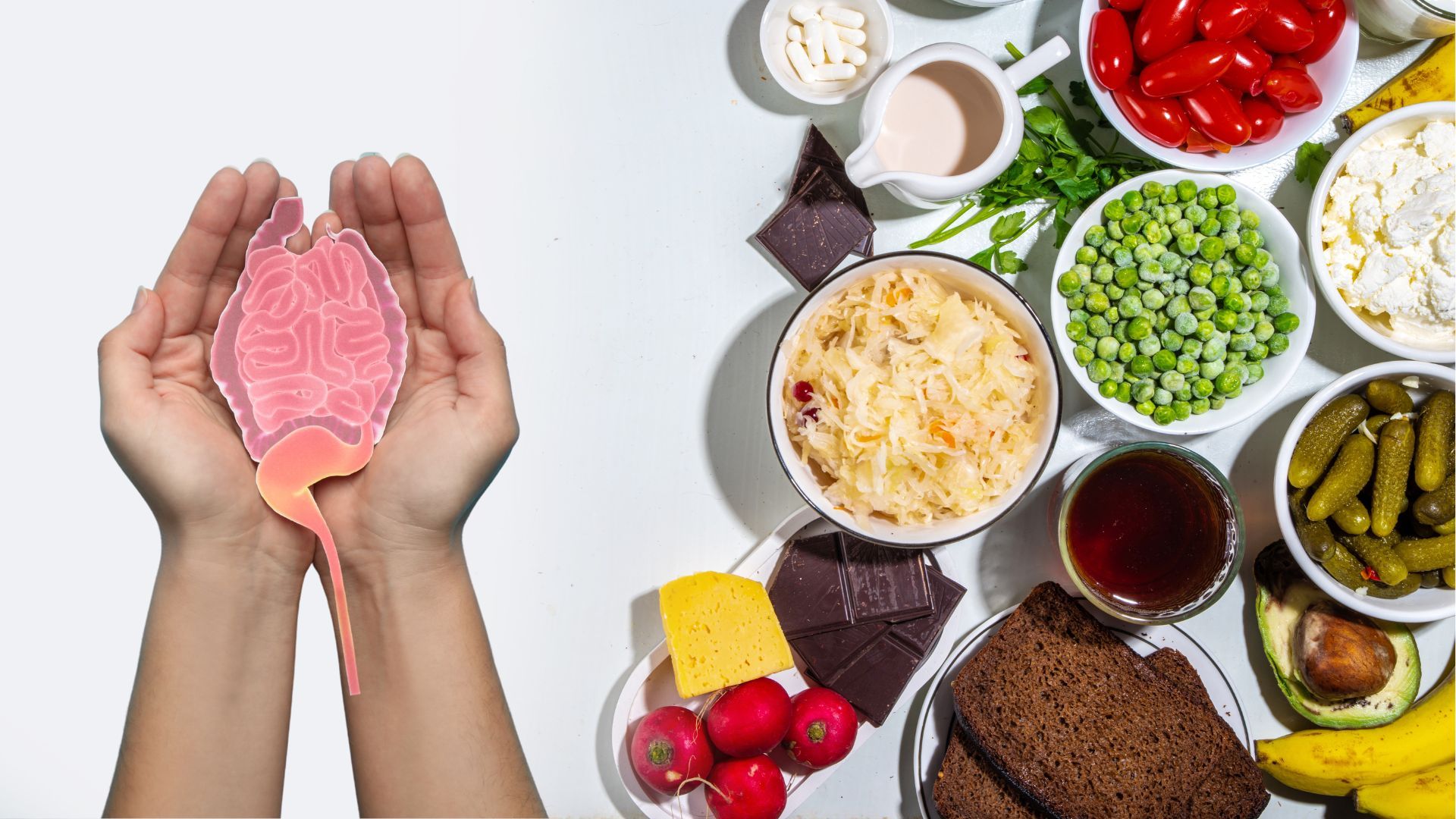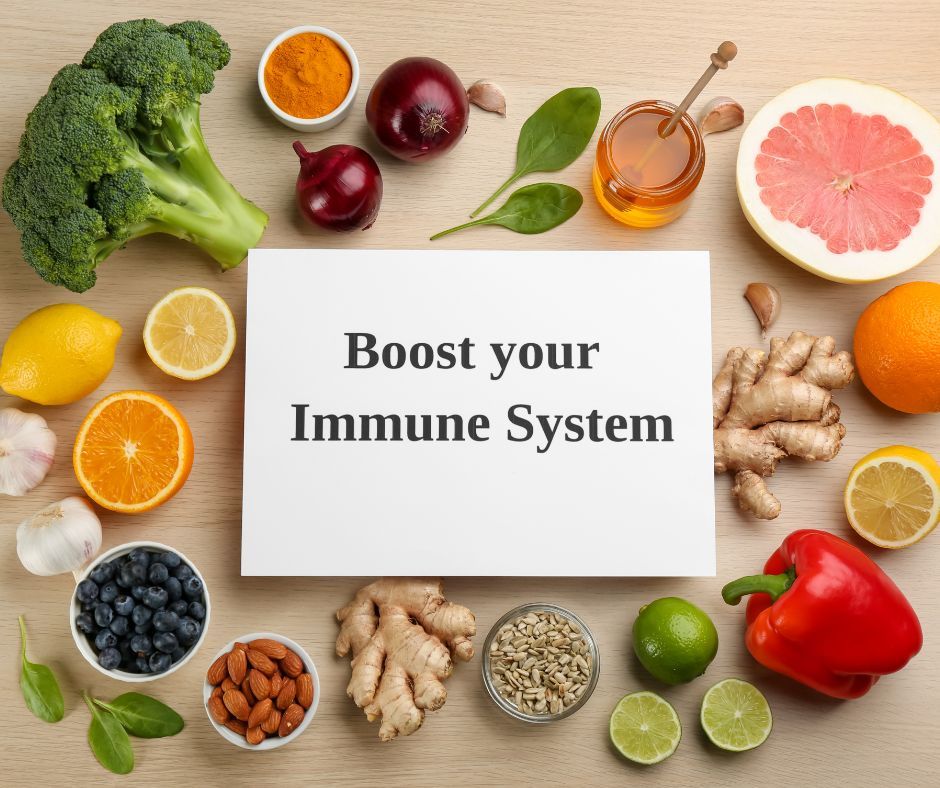When we talk about gut health, probiotics get all the glory and prebiotics get none of the credit. However, without prebiotics, probiotics aren’t anything. You see, prebiotics are to probiotics what fertiliser is to a beautiful garden; without them, there simply wouldn’t be one! Prebiotics are what provide the beneficial bacteria of our guts (i.e., probiotics) with the nourishment they need to flourish. A gut flourishing of probiotics is what helps to keep your gut functioning optimally, which can significantly improve your health, and makes prebiotics a crucial part of your health and well-being.
What are Prebiotics?
Prebiotics are the non-living, non-digestible plant fibres that feed the beneficial bacteria (probiotics) residing in your gut. (1) These fibres are primarily found in various plant-based foods, such as fruits, vegetables, whole grains, and legumes. When consumed, these prebiotics pass through your small intestine undigested and arrive in the colon, where they become a source of nourishment for the friendly bacteria, helping them thrive and flourish. When the beneficial gut bacteria digest and ferment prebiotics, they produce short-chain fatty acids (SCFAs) such as acetate, propionate, and butyrate. These SCFAs contribute to a host of health benefits!
What are the benefits of prebiotics?
Prebiotics can have a significant positive impact on human health, making them potent and natural tools for enhancing the quality of life. The beneficial effects of incorporating prebiotics into your diet include supporting the growth of beneficial bacteria, enhancing immune function, suppressing pathogens (harmful bacteria), reducing inflammation, regulating blood sugar levels, improving digestion and metabolism, and providing protection against vascular diseases, mental disorders, obesity, and cancer. (1)
Prebiotics vs. probiotics - What sets them apart?
Think of your gut as a flourishing garden. Probiotics (the good bacteria) are the diverse array of plants and flowers that make up the garden, while prebiotics are the nourishing soil and water that allow these plants to grow and thrive. Simply put, prebiotics feed probiotics. • Probiotics put the good bacteria into your body. • Prebiotics feed the good bacteria.
By feeding your gut's beneficial bacteria, prebiotics contribute massively to the overall health of your gut microbiome and, in turn, to your overall health and well-being.
How to Incorporate Prebiotics into Your Diet
Prebiotics are naturally present in many plant foods, including green bananas, asparagus, Jerusalem artichokes, onion, garlic, leeks, barley, rye, oats, wheat, soybean, potatoes, peas, chicory root, and lentils. (1) A Nutritional Therapist can help you navigate your diet and the supermarket to help ensure you choose foods that feed your good bacteria and promote a diverse microbiome. Here are some tips to get you started:
- Fiber-rich grains: Incorporate whole grains like oats, barley, whole wheat, and brown rice into your diet.
- Fruits and vegetables: Diversify your fruit and vegetable choices, including foods with soluble fibre e.g., apples, bananas, asparagus, and garlic. Onions and leeks contain inulin, a specific prebiotic fibre that feeds beneficial bacteria like Lactobacillus and Bifidobacteria. (2)
- Legumes: Beans, lentils, and chickpeas are packed with prebiotics and can be integrated into various dishes.
- Cook, cool, then reheat foods like rice, pasta, and potatoes to increase resistant starch which feeds your good bacteria. (3)

Personalised Prebiotics for Optimal Health & Symptomatic Relief
Like humans, your gut bacteria don’t like to eat the same foods as each other! It’s common to eat the same few fruits and vegetables without ever really ‘mixing it up’. The issue is that if you are always eating the same few sources of fibre – you’re only feeding the specific bacteria that feed off those fibres, and potentially neglecting the rest. For example, eating walnuts will boost butyrate-producing bacteria such as Roseburia, eating apples and almonds can help Bifidobactera thrive, and spirulina can feed Barnesiella. There are so many species of bacteria that can promote unique health benefits. By identifying what dietary requirements these beneficial bacteria have, we can improve overall health and alleviate certain health symptoms!
Personalised dietary recommendations and tailored fibre and plant-diversity plans can help you make the most of prebiotics to improve your digestive health, enhance nutrient absorption, promote overall well-being, and alleviate certain symptoms you might be experiencing. This is where the support of a Nutritional Therapist can be invaluable. Incorporating prebiotics into your daily diet is a substantial step you can take TODAY towards nurturing your gut's microbiome and reaping the rewards of enhanced gut health and immune function. Prebiotics are the unsung heroes behind a well-nourished and thriving gut ecosystem, supporting your journey towards a healthier and happier you.
Key Takeaways
- Prebiotics feed probiotics. They nourish the beneficial bacteria in our guts.
- They are non-digestible fibres found in plant foods.
- Prebiotics can help to significantly improve health.
- Prebiotics can be found in many plant foods, including grains, fruits and vegetables, and legumes, as well as by cooking and reheating starchy foods.
- Different prebiotics feed different beneficial bacteria. Optimal health can be maximised by consuming different prebiotics. Consuming specific prebiotics in the diet can also help to treat certain symptoms.
- A nutritional therapist can help you with a tailored nutrition plan to help ensure you are consuming a diverse range of prebiotics to optimise your health, as well as specific prebiotics to help alleviate certain symptoms.
References
- Prebiotics: Definition, Types, Sources, Mechanisms, and Clinical Applications. Davani-Davari, D., et al. 3, s.l. : Foods, 2019, Vol. 8.
- Fiber and Prebiotics: Mechanisms and Health Benefits. Slavin, J. 4, s.l. : Nutrients, 2013, Vol. 5.
- Measurement of resistant starch in vitro and in vivo. Englyst, H. N., et al. 5, s.l. : Br J Nutr., 1996, Vol. 75.








